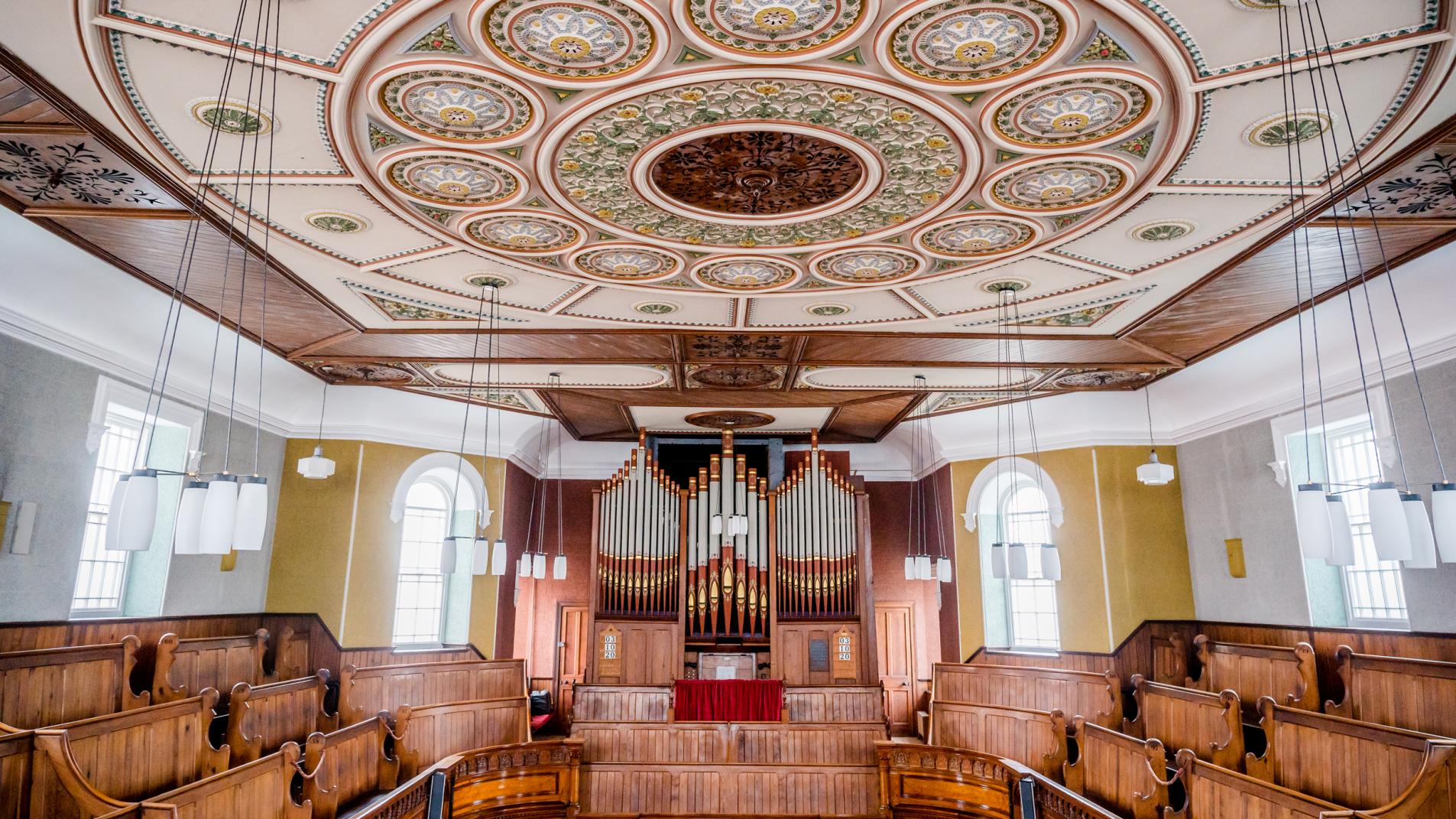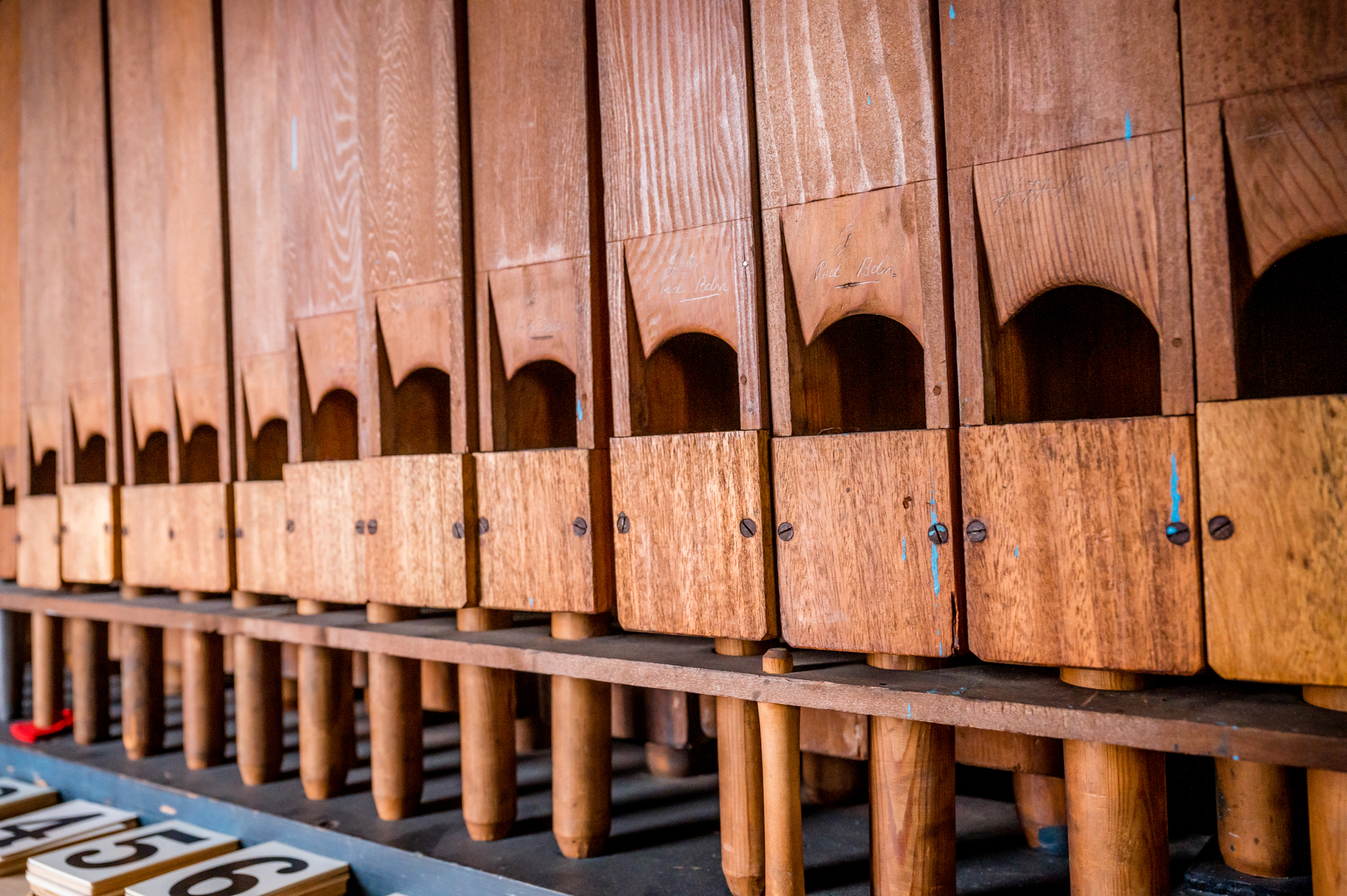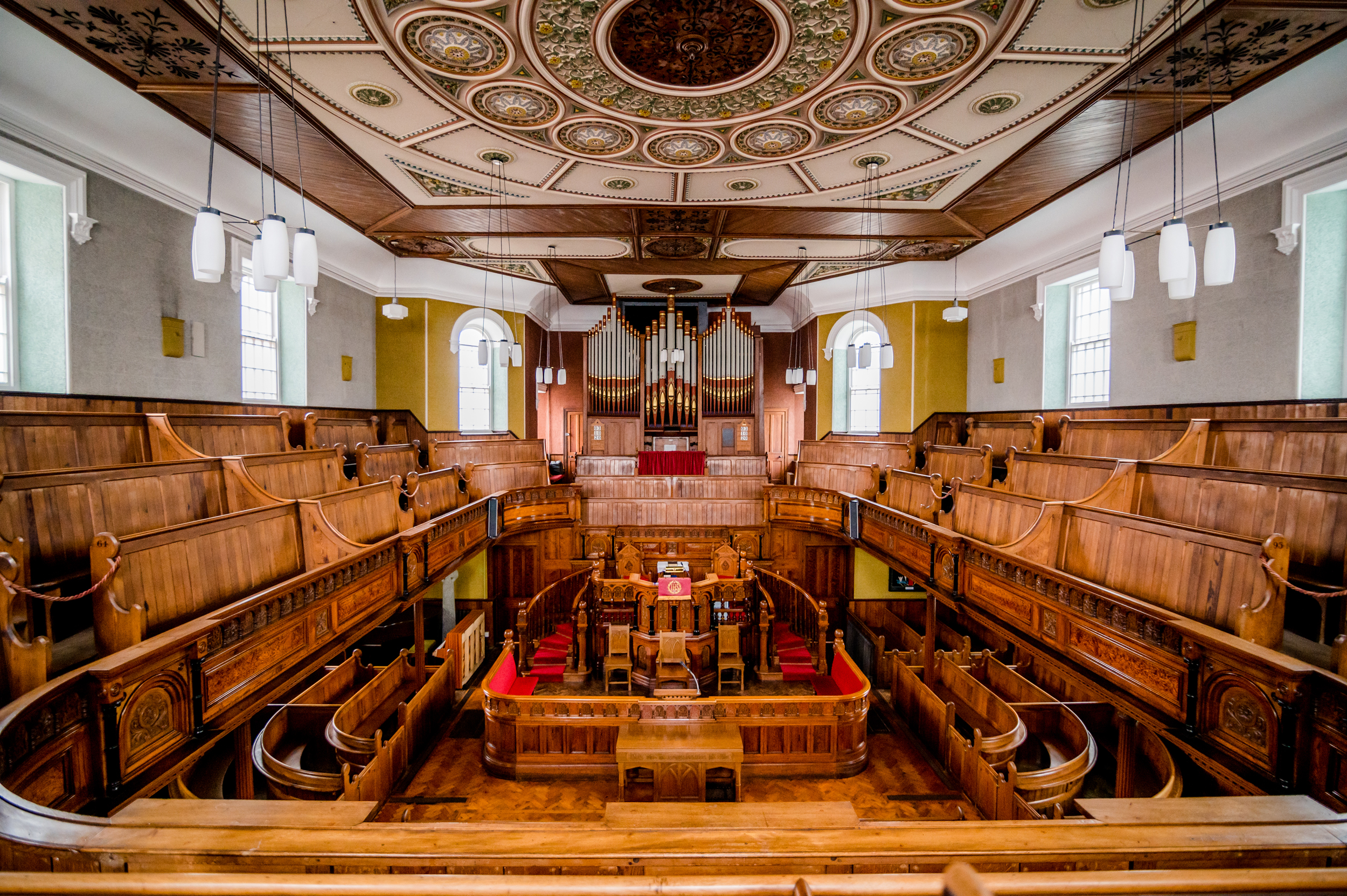
It is one of the most enduring of Brecon Stories: ‘The Plough Chapel got its name from the tavern that once occupied the site.’ It is a tale that has echoed down the generations, and a name that has been given to a succession of buildings.
Chapel member, and former broadcaster Glyn Mathias discusses the early history of the chapel which goes back to 1699.
In a new video for Brecon Story, he says: “They met in a building called The Plough House, which was otherwise involved with a pub. “I suspect the public house was a separate room, [there were] many, many rooms in the building,” explains Glyn.
“It sounds rather strange but the Plough is the name which has stuck to this chapel for over three hundred years.”
The site of the Plough public house was sold for five shillings to build a place of worship in 1697, says Dr W.S.K Thomas in his fascinating book, Georgian and Victorian Brecon. It was completed two years later and licensed as a place of worship. The chapel was rebuilt in 1841, the Silurian newspaper calling it a ‘spacious and handsome new chapel.’

Further major renovations followed at the end of the 19th century. An article in the Brecon and Radnor Express from July 1897 reports on a reopening service and even includes an illustration showing a front view of the new building, calling it ‘one of the prettiest chapels in the whole of the Principality.’
It continues: ‘The transformation, both internally and externally, is such as to give the very best results in the matter of design, convenience, accommodation and comfort.’
It also notes: ‘We understand the cost altogether is upwards of £2,500.’
And the results of that expenditure can be seen and appreciated today. Chapel member Beryl Gibson told the Brecon Story film: “You go down Lion Street in Brecon. You think, gosh, you’ll find nothing here and all of a sudden this wonderful gem appears when the doors open.”
With the decline of chapels across Wales and many old buildings being given new uses, minister Julie Kirby adds: “It’s good to be worshipping in a chapel that once was a hostelry rather than drinking in a pub that was once a place of worship.”
You can read more about the history of the Plough in this online booklet and more about current activities on their own website here.
The Powys County Archives contain some fascinating notes about the early years of the Plough Chapel and many other Breconshire places of worship.
The Coflein website - the database for the National Monuments Record of Wales (NMRW) also has lots of other information.
